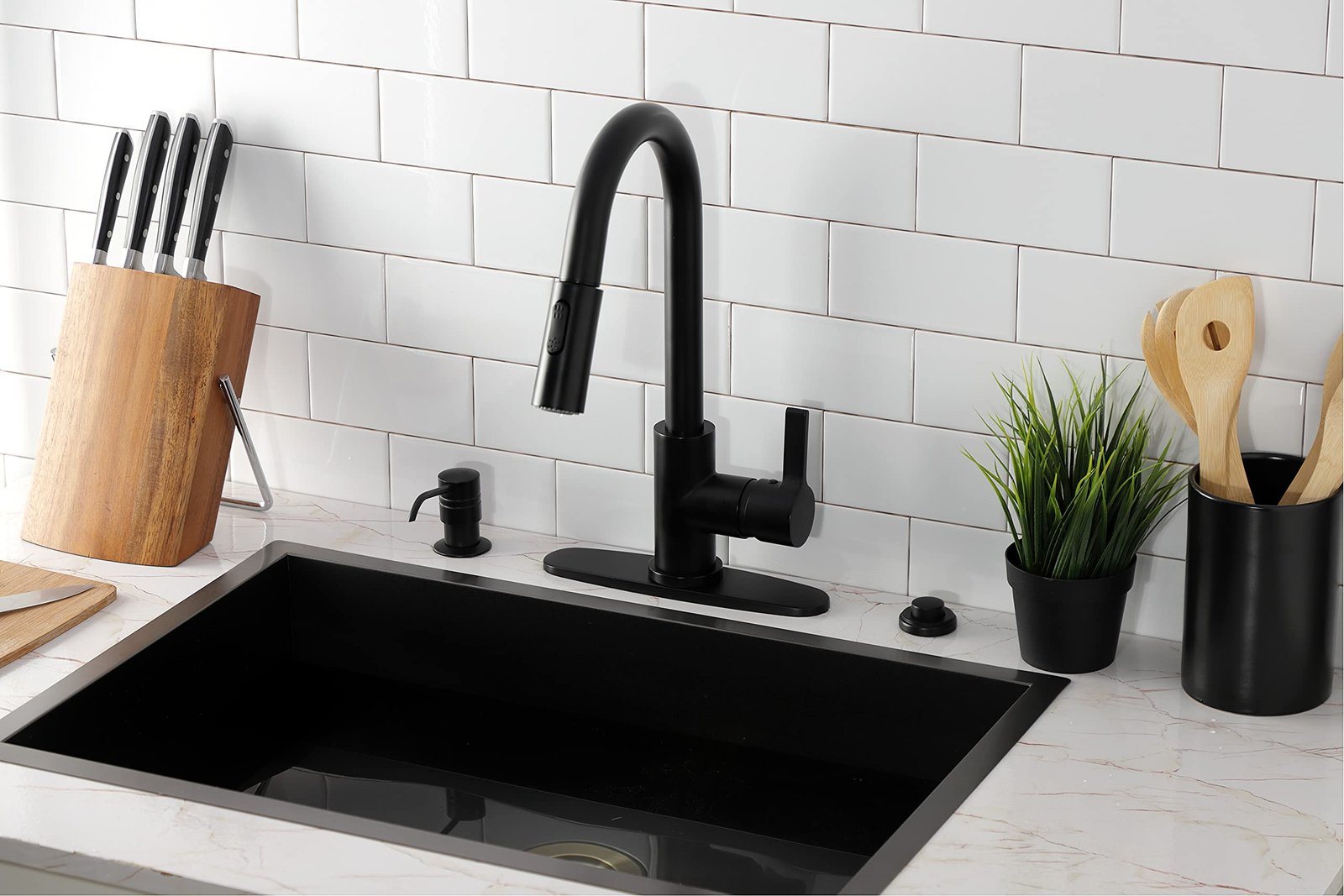It’s possible to install a faucet without a sprayer. Although purchasing a sprayer and installing it might be a tiring task that needs additional cost. Why not install a faucet without using the sprayer? It sounds good.
Let’s get into the guide on how to install a kitchen faucet without using the sprayer.
Perhaps all you need is to replace the old faucet and install the new one. If you already have a faucet with having sprayer, simply disconnect the extension line if you don’t want to use them.
Can you install a kitchen faucet without using sprayers?
It is totally up to you whether or not to install a kitchen faucet sprayer. It depends on your preferences and what you perceive to be long-term excellent, practical, and lasting. Therefore, the installation lacks rapid stick guidelines.
It is well known that kitchen faucets without sprayers are far more sturdy. While a kitchen faucet sprayer allows for great versatility while cleaning and rinsing, it also offers several drawbacks. The diverter valve gets clogged, the handle gets sticky, and the spray head drops and leaks.
All these problems demand a kitchen faucet without using a sprayer.
How to install a kitchen faucet without using the sprayer?

The kitchen faucet is not very difficult to install. You may install it without professional assistance, but you must follow the steps and directions throughout the procedure.
Apparatus required:
- Bucket
- Wrench
- Basic wrench
- Towel
- Faucet gasket
- Supply line
- Penetrating or greasy oil
- Sinkhole cover
- Faucet plate
- New faucet
Step 1:
Remove the old faucet:
If installing the faucet for the first time, skip the step. Otherwise, remove your older faucet through this procedure.
Turning off the main water supply is the first thing you must do before beginning. After that, tidy up the space around your kitchen sink by removing any debris and trash that can get in the way.
Use a cloth and a pail throughout the operation to capture or clean up any unneeded spills or leaks.
Check to see whether any extra water has been drained from the faucet before opening it. Then close the shut-off valves for hot and cold water.
The faucet supply lines may be disconnected using your wrench or pipe wrench. Once the supply lines have been cut off, remove the supply lines from the faucet and use a screwdriver to remove the mounting bolts.
If necessary, use penetrating oil to help you with this task.
When you complete the step correctly, you have cleared up the space for the new faucet having no sprayers.
Step 2:
Installing the new faucet without sprayers:
If you wish to install a kitchen faucet without the sprayer, you can do it using a single-handed facet. Take the new faucet and place it in the sinkhole to get started.
Remember to take out any stripped screws.
Use a faucet plate or a sinkhole cover to close up any other sinkholes that aren’t utilized by the faucet. The three sinkholes that your faucet will typically employ.
There will be a fourth one accessible for the sprayer, but you may cover it since you won’t use it and don’t want to see a vast hole every time you clean the dishes.
Then, after mounting the faucet into the sink and tightening the nuts with your screwdriver to ensure that it is firmly secured, insert the faucet supply lines into the faucet to get hot and cold water. Connect the valves and water supply lines. To ensure there are no leaks, you can use silicon or Teflon tapes.
With a wrench, tighten the bolts to ensure your faucet is tightly fixed and leak-free. The main water supply can be turned back on before the faucet valves are opened. Ensure there are no leaks by keeping an eye on the faucet as water flows through it.
The task is complete if the water flows uninterrupted. Until the leaks have been fixed, ensure the supply lines, the faucet, and the sinkholes are all firmly connected.
FAQs:
- What should I do if my valves are broken?
The best course of action for leaky or broken valves is a replacement. You can complete it. Or you might ask a professional for assistance.
- Can I use a single-hand faucet with both a sprayer and a faucet?
Yes, you may utilize a single-hand faucet sprayer and faucet. There are faucets with a variety of uses. You may buy that faucet and use it in your kitchen if you want to.
Bottom lines:
This is all about how to install a kitchen faucet without using the sprayer. However, it’s the appropriate procedure if you wish to remove the sprayer. Installing a kitchen faucet costs at least $150 to $250 when done by a qualified plumber. If you install it yourself, you can save this money.
We hope that you get some assistance with our step-by-step guidelines. You can see the practical video below.





